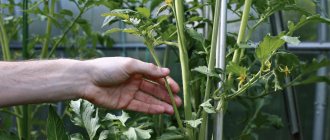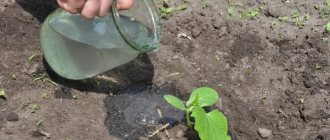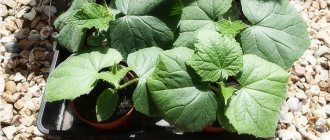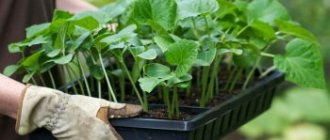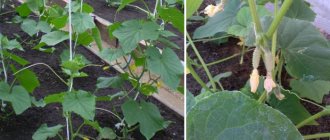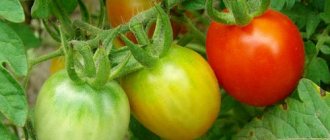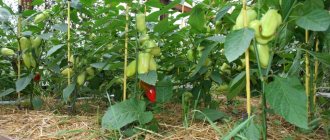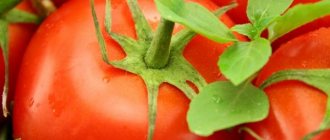Why shape eggplants?
Despite the fact that plants in nature develop independently without intervention, it is recommended to form vegetable crops.
Most summer residents from the southern region do not recognize the formation of eggplants in open ground. But in cities with shorter summers, without bush formation, eggplants may not have time to ripen or they will have to be harvested from small fruits.
Important! It is necessary to remove stepsons in order to redirect the plant’s forces to the harvest, without wasting them.
Possible difficulties when growing eggplants in a greenhouse
Eggplants are a demanding crop, and despite the optimal conditions created for them in greenhouses, problems often occur during cultivation.
Problems when growing eggplants in greenhouse conditions:
- Spots appear on the leaves. If they are not caused by a disease, then the likely cause is direct exposure to sunlight or close proximity of lamps.
- Shoots grow poorly after planting. During the first 10 days, the seedlings take root and do not grow - this is normal. If the seedlings continue to grow no longer, it is necessary to feed them with Kornevin.
- The foliage has turned yellow. Perhaps the watering schedule or dosage of fertilizer is incorrect, or the plant is affected by a disease.
- The ovaries fall off. This phenomenon occurs when there is a deficiency or excess of moisture.
- The bush develops well, but there are few ovaries. The reason is an overdose of nitrogen fertilizers or lack of pruning.
- The bush blooms, but does not bear fruit. Artificial pollination is required.
Requirements for the formation of bushes
To increase fruiting, you should familiarize yourself with the requirements for how to shape eggplants:
- the pattern of bush formation and the features of the procedure depend on the crop variety;
- low-growing greenhouse plants should not grow more than 35-40 cm in height;
- varieties of indeterminate selection should be formed using the 1-stem method, excluding pity for flowers and ovaries on extra shoots;
- The procedure should not be done with weakened and diseased plants that will not bear fruit in the future;
- pruning should not be carried out in rainy and hot weather conditions, as the bush becomes deformed due to dampness and excessive amounts of ultraviolet rays;
- the best time to form bushes in the garden is early morning or evening;
- there is no need to ripen early ripening varieties;
- excess tops are removed by hand, thick shoots are cut off with pruning shears;
- vegetable crops are planted every 14 days.
Important! Experienced gardeners advise removing all biomass that is located below the branching of the central stem. Leaves can be left in rare cases to form shade during infrequent watering.
Features of the formation of low-growing eggplants
For low-growing eggplants, it is enough to carry out only minor sanitary pruning. Below the fork, all leaves and weak stepsons are removed. They also get rid of old leaves and those that greatly thicken the bush.
Damaged and deformed ovaries are also of no use to anyone; they can be removed. Towards the end of the season, it is recommended to pinch the tops of the stems and tear off the flowers, which still will not have time to produce full fruits.
Thanks to proper formation of eggplants, the quality of the fruits improves, and the plants get sick less. Moreover, the procedure itself is quite simple and does not take much time. You just need to learn the basic rules and put them into practice. This will bring undoubted benefits and will have a beneficial effect on the harvest.
Removing stepchildren - general rules
The procedure for removing stepchildren is simple. Each shoot must be pinched with two fingers, then alternately bent and unbent on the sides until it breaks.
If you need to process a large number of crops, you should use a sharp household tool, scissors or a knife.
Important! During work, before each bush, you need to treat garden tools with a disinfectant so as not to risk infecting the plants.
Stepchildren under the lower fork
The stepsons under the lower fork must be removed carefully using garden tools. The procedure must be carried out regularly and the growth of these elements must be monitored. This will help to correctly form the bush in time using the chosen method.
Formation methods
Experienced gardeners can tell you about three main methods for forming eggplant bushes.
In one stem
These instructions are usually used in a small polycarbonate greenhouse or for weakened tall crops in any conditions.
It is necessary to select the strongest stem and, after trimming the excess elements, tie it with twine to a vertical support. You should not use wire for this so as not to damage the bush. The top needs to be pinched off when its height reaches 30 cm, thanks to this the lateral stepsons grow more intensively.
Important! It is necessary to leave 1 ovary per crop so that the branches with fruits are without the top part.
Schematic explanation of formation into one stem
In two stems
This method is more effective, because it allows up to 12 fruits on each bush. It is used for tall growing varieties with thin stems.
The procedure is carried out step by step after selecting 2 large sprouts, removing the remaining biomass. It is necessary to pinch off both tops to enhance the supply of useful elements.
It is worth leaving the largest ovary on the bush, removing new buds. At the first stage of the procedure, you need to trim the main stem, then select 2 central stems from the overgrown sprouts.
Three or more stems
This type of pinching is practiced on healthy greenhouse plants that have thick shoots. After all, other types cannot withstand the weight of ripening vegetables.
When the bush reaches a height of 30 cm, you need to pinch the central sprout. Then it is necessary to select several of the most developed shoots from the formed stepsons.
Any type of bush formation must begin by isolating the central sprout
How to carry out the procedure
Improper formation of bushes can lead to rotting of the root part or, if pruned excessively, to the death of the plant.
Growing eggplants is done by hand ; no tools are needed for this process, as they can damage the delicate stems.
Before treatment, wipe your hands with a disinfectant solution to prevent infection. If a pruner is used, it is also processed and ash or potassium permanganate is prepared for processing the cuts.
Before you begin to remove the stepsons, the bushes are tied up . Otherwise, there is a possibility that the stems will break off under the weight of the crown, since pruning greatly weakens them.
If the bush is formed into two stems, the garter is made below the branching point.
Formation instructions:
- three weeks later, all stepchildren are removed for the first time (time is counted from the day of disembarkation);
- thereafter pruning is carried out every 14 days.
There is no point in delaying the procedure, since not only the formation of the correct crown, but also the yield depends on this.
How to shape eggplants correctly
From the information above you can see whether it is necessary to pinch the eggplants. The processes differ depending on the growing conditions of the crops.
In greenhouses and greenhouses
The rules on how to form eggplants in a greenhouse are as follows:
- after the bush reaches a height of 25-30 cm, the plant should be given 1-2 weeks to adapt before the procedure;
- pinch off the top of the main sprout with your hands;
- 14 days after the formation of new growth, it is worth choosing 1-2 strong stepsons and removing the rest;
- the development of crops should be monitored; new branches appear in the leaf axils, which must also be removed;
- weak stepsons need to be pinched after the second leaf above the ovary so that 1 fruit remains on it;
- when choosing the three-stem pruning method, plant the bushes at a distance of 20 cm between them;
- a month before harvesting, it is important to remove growing points so that the forces of the crop are not directed to the development of unnecessary elements.
Sewing into several stems
According to the scheme of 2 or more stems, eggplants are mainly grown in a greenhouse. It is effective for varying degrees of neglect of plantings. The pinching procedure is carried out when the plant is large and strong.
The eggplants should be harvested like this:
- Pinch off the tops when the young bush reaches 30 cm in height.
- Leave 2 strong stepsons.
- At the point where the stem divides into 2 branches, pinch off small ones.
- Leave 1 fruit on each shoot.
In hot and humid weather, be sure to remove excess lower stepsons: they contribute to increased root moisture and the development of viral and fungal infections. In excessively dry air, shoots close to the ground are left.
Useful tips for gardeners
According to experienced vegetable growers, you should:
- Perform the pinching procedure on eggplants, starting from the bottom shoot. In hot weather, you should not perform such actions to avoid the development of a pathogenic environment.
- When the air humidity in the greenhouse is minimal, it is permissible to leave the lower stepsons, this will help retain soil moisture.
- It is recommended to control the growth of crop branches so that they do not overgrow.
- It is worth checking that there are no deformed foliage on the bushes.
If you follow all the rules, you can get a bountiful harvest.
Characteristics of the blue ones
You can get lost in the variety of species available. Modern selection presents eggplants not only with the standard purple color; white, yellow, orange, red and even green fruits are currently grown. When choosing seeds for planting, you should consider that there are varieties and hybrids. The prefix to the name F1 means hybrid; they are grown only in greenhouses. Hybrids are more demanding in terms of agricultural technology and mineral fertilizing, but they are more resistant to diseases. The varieties are less demanding in terms of maintenance and care, and can be grown in open ground.
Varieties are distinguished by growth type:
- indeterminate with unlimited growth, requiring mandatory formation;
- low-growing varieties that also need formation, but to a lesser extent;
- and by ripening period: early (Robin Hood, Bourgeois F1, Black Beauty, King of the North) and mid-ripening (Universal, Simferopol, Bull's Heart, King of the Market, Chernomor, Albatross, Almaz).
For open ground and film shelters, choose early-ripening varieties with a compact bush up to 1 m in height (Albatross, Delicatessen, Karslon, Bychiy Lob). In hotbeds and greenhouses, medium-sized eggplants up to 1.5 m are grown. and tall ones, which can grow up to 2 m and higher (Arap, Helios, Gorodovoy F1, Airship).
The formation of low-growing and medium-growing varieties is done in different ways.
General growing rules
Eggplants are grown only by seedlings. The optimal age of seedlings is 60-70 days.
Residents of central Russia and the Moscow region are better off choosing early-ripening varieties for open ground. Mid-season eggplant varieties are grown in greenhouses, since such varieties are the most productive and have croissant fruits, but ripen later.
Rules for any growing method:
- light duration 12-14 hours required for growth;
- For blue ones, a constant temperature of +25 - +30 degrees is important;
- high humidity 65-70%;
- timely formation of eggplant bushes, removal of excess shoots and ovaries.
The easiest way to create such conditions is in greenhouses, but experienced gardeners grow them in open ground on raised beds, using temporary film covers. Formation of eggplants in conditions of risky farming makes it possible to obtain a full harvest in a short summer period.
Common Mistakes to Avoid
To get a good harvest, you should not make the mistake of thinking that:
- Vegetables should not be pinched, there is no need to form a bush. Based on practice, it can be seen that this procedure is excluded in the process of growing low-growing varieties.
- Pinching the plant disrupts its natural growth. Although in fact, thanks to the removal of the lower shoots, it is possible to correctly form a bush with high-quality fruits. Do not forget that plants have a regeneration process.
- The misconception that the lower part of the stems should not be formed leads to the death of the bush. A root zone that is too shaded promotes the development of putrefactive bacteria. In this case, the lower part of the culture takes away the nutritional components.
- There is no need to say that the ovaries should be left mainly at the bottom of the bush. In fact, closer to the top, a larger number of fruits are always formed.
- The formation of all the bushes in the garden according to the same pattern, as many believe, is unacceptable due to the characteristics of the vegetable varieties. Each plant requires an individual approach, it depends on the rooting and health status of the crops.
Creating the right conditions, monitoring and monitoring vegetable crops will ensure an abundant and high-quality harvest both in the greenhouse and in the open ground.
General information on caring for eggplants
Eggplant is an annual herbaceous plant from the Solanaceae family. This species is considered one of the most popular representatives of fruit crops, therefore it is grown everywhere. In the southern zone, this plant is cultivated in open soil, while in temperate climates it is grown in a greenhouse.
This is often due to the increased heat-loving nature of the bush; the optimal temperature for its growth is within +25...+30°C, which in a temperate climate zone can only be achieved under artificial conditions. The bush is also demanding when it comes to watering; eggplants develop best with moderate irrigation. In this case, the soil moisture should be constant, water should be added regularly, in small portions. At the same time, sudden changes in soil humidity are quite destructive for the crop.
To achieve high plant productivity, they need to be given a lot of attention; after planting the seedlings, it is imperative, at least once a week, to weed and loosen the soil to a depth of 5–7 cm. This will protect the plantings from the effects of weeds, as well as oxygen deficiency. The soil also needs timely fertilization. It is carried out at least 3 times: 2 weeks after seed germination, 14–20 days after planting seedlings in open soil and during active flowering.
Particular attention should be paid to pruning when caring for the crop. Despite the neglect of the procedure by many gardeners, only timely pruning helps to achieve the maximum biological potential of each plant. This is explained by the fact that removing unnecessary parts of the bush optimizes the development of the rest; in this case, pruning infertile branches has a positive effect on the development of the crop. Therefore, formation is carried out soon after seedlings are planted in the soil and then throughout the entire growing season.
Did you know? Despite their nutritional value, eggplants are considered a rather dangerous vegetable. The fruits contain the harmful toxin solanine, so they are allowed to be used for food only in the technical ripeness phase (the pulp and peel are dense, juicy and elastic).
